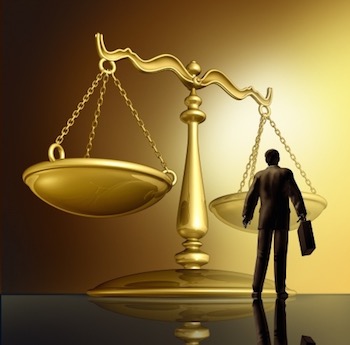 By now it is not news that the Supreme Court has reversed the Federal Circuit in TC Heartland v. Kraft Foods, and in doing so, upset the long-prevailing framework dictating how patent cases disperse among the country’s district courts. The Supreme Court held that personal jurisdiction over a defendant is insufficient, by itself, to satisfy venue in a patent case. Instead, patent-holders must sue where the defendant resides—i.e., its state of incorporation—or where it has committed acts of infringement and it has a regular and established place of business.
By now it is not news that the Supreme Court has reversed the Federal Circuit in TC Heartland v. Kraft Foods, and in doing so, upset the long-prevailing framework dictating how patent cases disperse among the country’s district courts. The Supreme Court held that personal jurisdiction over a defendant is insufficient, by itself, to satisfy venue in a patent case. Instead, patent-holders must sue where the defendant resides—i.e., its state of incorporation—or where it has committed acts of infringement and it has a regular and established place of business.
The decision was welcomed by companies subject to or susceptible to regular suit for patent infringement. The older regime permitted a considerably lop-sided concentration of patent cases in districts viewed to be friendly to patent-holders, most notably the Easter District of Texas. That hindered defense of patent suits within home forums in front of home juries. No longer. In the wake of the Supreme Court’s decision, defendants are now entitled to face their (patent infringement) accusers at home.
For many, TC Heartland represents another victory over the purported scourge of “patent trolls,” which along with the Supreme Court’s decisions in Alice, Octane Fitness, Nautilus, among others, and the rise of inter partes review, have slowly squeezed patent-infringement cases and made them harder to bring and patents more difficult to enforce.
But for patent-infringement defendants, is TC Heartland all good news? For defendants, what are the negative consequences of this decision?
Joint-defense groups will suffer
Patent-holders, and NPE’s in particular, have a tendency to sue multiple defendants at once. Those defendants are typically sued at the same time and within the same district (even if they are nominally in different cases.) In response, a common tactic among the defendants is to form joint-defense groups. These groups are cognizant that presenting a unified front, with arguments and defenses that are both joined by all defendants and applicable to all defendants, is critical to early success.
Joint-defense groups lower costs and increase efficiencies for all defendants in the groups. Certain prominent patent litigation boutiques and Big Law departments have skillfully made a business of being retained by many of the accused infringers in a single multi-defendant case. Even if counsel is not shared among defendants, the benefits of joint-defense groups inure greatly to small- and medium-sized companies that gain the benefit of top-notch defense teams retained by larger tech companies, without having to pay for them. Joint-defense groups also leverage economies of scale to accomplish more at lower costs for everyone. For instance, filing four or five IPR petitions may be feasible when those costs are spread around a group, but prohibitive for any individual defendant. In short, the pre-TC Heartland framework provided significant cost-savings and efficiencies to defendants, and in particular, small- and medium-sized companies.
Those advantages may now be lost. If a patent-plaintiff is forced to bring individual suits around the country in order to satisfy venue constraints, that will likely diminish the prevalence of joint-defense groups. Defendants are more likely to find themselves sued alone. For small- and medium-sized companies, without the benefit of a joint-defense group, defending the case alone will be more expensive and time-consuming. In some cases, it may not be feasible. Coordinating IPR efforts among defendants sued in different districts, subject to different schedules, may be prohibitive.
Plaintiffs are also less likely to sue all defendants at once. If they are forced to sue all around the country, retain different sets of local counsel, draft complaints and schedules tailored to different local rules, then that may deliberately or inadvertently lead to suits being staggered. Staggered suits will make it harder for joint-defense teams to form. It will be harder for them to coordinate time-sensitive decisions such whether to file an IPR before the time-bar deadline. This problem will be exacerbated when defendants have drastically different time-bar deadlines.
If suits are staggered and dispersed more evenly through the country, then that creates the risk of more parallel litigations. The odds increase that defendants walk into a suit where the patent has already been construed in another district or an IPR has already been filed. While those rulings may undoubtedly benefit defendants, they could also hobble them—especially larger, well-heeled defendants—from exercising the measure of control over their own defense that they understandably prefer. An increase in parallel litigations addressing the same patent may also, understandably, encourage Judges to defer to rulings in their sister courts. In short, TC Heartland increases the likelihood of parallel litigations, and that correspondingly may hinder each individual defendant’s control over its particular defense.
During oral argument before the Supreme Court, TC Heartland’s counsel cited a statistic that 68 percent of small- and medium-sized businesses will obtain venue relief if TC Heartland wins. That is very likely to be true. But the consequences of that venue relief may mean it is more expensive and more difficult for those small- and medium-sized companies to defend these cases in the future.
Distributors and retailers will be dragged into suits more
Under the new TC Heartland framework, venue exists where a defendant has committed acts of infringement and it has a regular and established place of business. The consequence is that many manufacturers will be exempt from suit except in one or two districts, i.e., where they are incorporated or headquartered. But the same may not hold for distributors or retailers. In fact, if a patent-holder cannot bring suit against a manufacturer in the plaintiff’s preferred district, venue may alternatively be grounded in a district where the brick-and-mortar stores are selling the product.
Prior to TC Heartland, distributors and retailers were not frequently sued if a suit could be brought against the manufacturer. In many cases, the manufacturer often will be indemnifying the distributor or retailer. Now, however, plaintiffs may experiment with a foregoing suit against the manufacturer, and bringing suit instead against distributors and retailers only. In the case of consumer products and retail tech, we may witness a spike in suits against brick-and-mortar outlets, including Wal-Mart, Best Buy, Staples, among others. In the case of more industrial tech, smaller, more regional distributors unaccustomed to facing allegations of patent infringement may be dragged into court. In short, an unwelcome consequence of TC Heartland is that manufacturers may increasingly be forced to deal with the discomfort of having their customers sued for infringement of their products.
These strategies will obviously have an impact on damages. Suits against distributors and retailers command different facts for showing willful infringement and may also circumscribe the scope of available damages. But patent-holders may prefer that to being forced to levy their allegations of patent infringement in districts viewed to be less friendly to patents.
Delaware will heat up, but other districts too
The fall-out of TC Heartland that is most expected from the patent community is a migration of cases from the Eastern District of Texas to the District of Delaware. The District of Delaware has deep patent experience and is generally very well-regarded.
That said, some patent plaintiffs may think twice before commencing new cases there. First, the uptick in patent cases filed is most likely to slow down any given case. Second, the increased load of patent cases may inadvertently lead to cases being transferred out of the district more easily, to less preferable venues. Third, the District of Delaware recently issued a $50 million attorneys’ fee award several years after the case had already ended. See In re Rembrandt Techs. LP Patent Lit., 1:07-md-01848 (D. Del.) Dkt. 1044. While that award was undoubtedly an outlier and limited to its particular set of facts, it may nevertheless spook certain patent-holders. In short, not all patent-plaintiffs will likely rush to file in Delaware.
The Southern District of New York is likely to see an increase in patent filings because, for many defendants, there is a higher chance it will be incorporated there or have a regular and established place of business in Manhattan. Similarly, the Northern District of California, the Northern District of Texas and perhaps the Northern District of Illinois may witness an increase in cases.
The consequence may be that courts previously viewed to be anti-patent may slowly become patent neutral, once they are compelled to preside over more patent cases and the measure of affirmances and reversals by the Federal Circuit begins to matter more. This might expose an irony underlying the accusation that the pre-TC Heartland framework sanctioned forum-shopping by plaintiffs. Namely, given the climate of patent-enforcement today, the Eastern District of Texas was perhaps not necessarily patent “friendly,” but just one of the Districts where patent-holders, rightly or wrongly, thought they could expect a fair shake.

![[IPWatchdog Logo]](https://ipwatchdog.com/wp-content/themes/IPWatchdog%20-%202023/assets/images/temp/logo-small@2x.png)

![[Advertisement]](https://ipwatchdog.com/wp-content/uploads/2024/04/Patent-Litigation-Masters-2024-sidebar-early-bird-ends-Apr-21-last-chance-700x500-1.jpg)

![[Advertisement]](https://ipwatchdog.com/wp-content/uploads/2021/12/WEBINAR-336-x-280-px.png)
![[Advertisement]](https://ipwatchdog.com/wp-content/uploads/2021/12/2021-Patent-Practice-on-Demand-recorded-Feb-2021-336-x-280.jpg)
![[Advertisement]](https://ipwatchdog.com/wp-content/uploads/2021/12/Ad-4-The-Invent-Patent-System™.png)







Join the Discussion
2 comments so far.
Paul F. Morgan
June 8, 2017 11:05 amRe the final sentence “he Eastern District of Texas was perhaps not necessarily patent “friendly,” but just one of the Districts where patent-holders, rightly or wrongly, thought they could expect a fair shake.”
Yes, it has not been particularly “patent friendly” in recent years in terms of final trial decisions or early trial dates or Fed. Cir. reversal rates of its decisions. But it has been widely reported as “patent friendly,” not for “fair shake” reasons, but rather for allowing long unrestricted discovery on any alleged claim scope by not holding Markman’s until the eve of trial, and by refusing early consideration of summary judgments, in most cases. Thus forcing settlements in the vast majority of cases to avoid litigation costs. [That is not the case in the N.D. CA and several other D.C.s]
Paul F. Morgan
June 8, 2017 09:02 amThis may be true, especially as to local counsel, but I don’t think this effect analysis is quite that simple. The vast majority of defendants sued on the same patent in the same D.C. [E.D.TX] separately settle early to avoid litigation expenses, and only a very small percentage of defendants go to trial. Many law firms are not that eager to cooperate or lose individual billing opportunities. Or they may have very different views on tactics. Even if there is not a full joint defense, and even if the suits are not in the same D.C., defense clients who actively control their litigation costs may want to at least share expenses or information for prior art searches, conducting IPRs, etc. Plus, at this point we do not know how many new suits will have defendants that are all incorporated in the same state, such as DE or CA, and thus may still all be being sued in the same D.C.?